- Dec 7, 2021
How to Roll Rocks for Hot Walleye Action
This often-overlooked strategy for trolling or casting crankbaits convinces tentative walleyes to bite and makes aggressive fish even more aggressive.
Rolling Rocks.
I’m not referring to the green-bottled beer (sorry Pennsylvanians), but to physically rolling submerged gravel and cobble with crankbaits. Dredging is another term applied to this high-action approach. How do you roll rocks with a crankbait? Velocity, plus depth!
Typically, a power trolling technique, rolling rocks is also a method used by savvy shore anglers and river waders. The “rolling rocks” terminology is quite literal. The goal is to pull the crank with enough velocity that it hits the rocky bottom so hard that the diving lip flips small rocks up and out of the way, plowing a mini furrow in the gravel bottom. Whether you are fishing a pea-gravel bottom or something bigger—marbles, cobble, baseballs, or even melons—instead of the norm of ticking those rocks, this technique begs you to SLAM into the rocks. It’s true that the bigger stuff doesn’t get rolled by the lure, but that’s not for lack of trying!
Fishing this aggressively for walleye is not for the faint-of-heart. It seems almost counter-intuitive to ignore the dive curve apps and run crankbaits designed for much deeper water. But that’s the crux of this method! It’s one of the best triggering tactics out there. The random darting action as the bait rebounds off the rocks has the kind of appeal that draws actively feeding fish as well as walleyes that thought they wanted to stay tight-lipped.
Depth
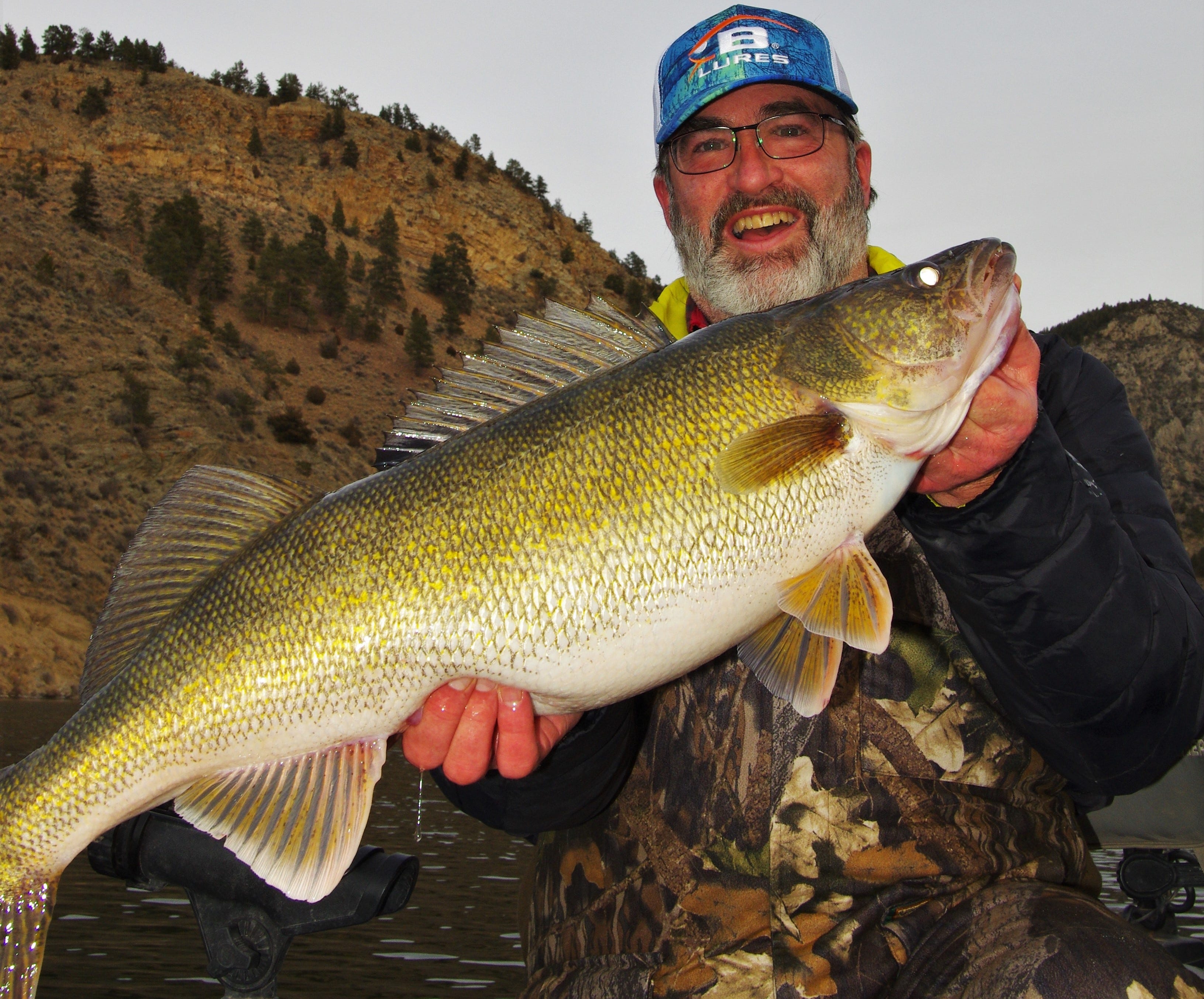

In these times of scientifically accurate apps to tell us the precise running depth of pretty much all crankbaits, it’s somewhat freeing to just grab a trusted lure with a big diving lip. All that matters is that your lure hits bottom HARD!
Out West on the Columbia River, me and my cronies commonly bump into “shallow” 18–20-foot water with Bomber 25A and Bandit Walleye Deep cranks that easily hit 25 feet on a flatline troll. Miles of clean gravel encourages this tactic, and countless hungry walleye reward us for our aggression, including walleyes weighing into the teens.
Rolling rocks with crankbaits is popular on several Missouri River reservoirs, too. But middle depths from 12 to 18 feet deep are the more common zone along the mighty Mo’. I’ve cashed national level tourney checks along the Missouri system by dredging with Cotton Cordell Wally Divers and Bomber 24As. I’ve even “cheated the system” by rolling rocks with stickbaits tearing up the bottom in only 3 to 5 feet over gravel flats on a Missouri reservoir near my home. That’s where baits like the Smithwick Rattlin’ Rogue series and Bomber 15A really shine. This past fall, my catch of 24- to 30-inch-plus walleyes increased exponentially when I stopped dialing in the perfect depth and just started smashing the shallows harder than sanity would suggest. The big girls loved it!
Finding Clean Bottom
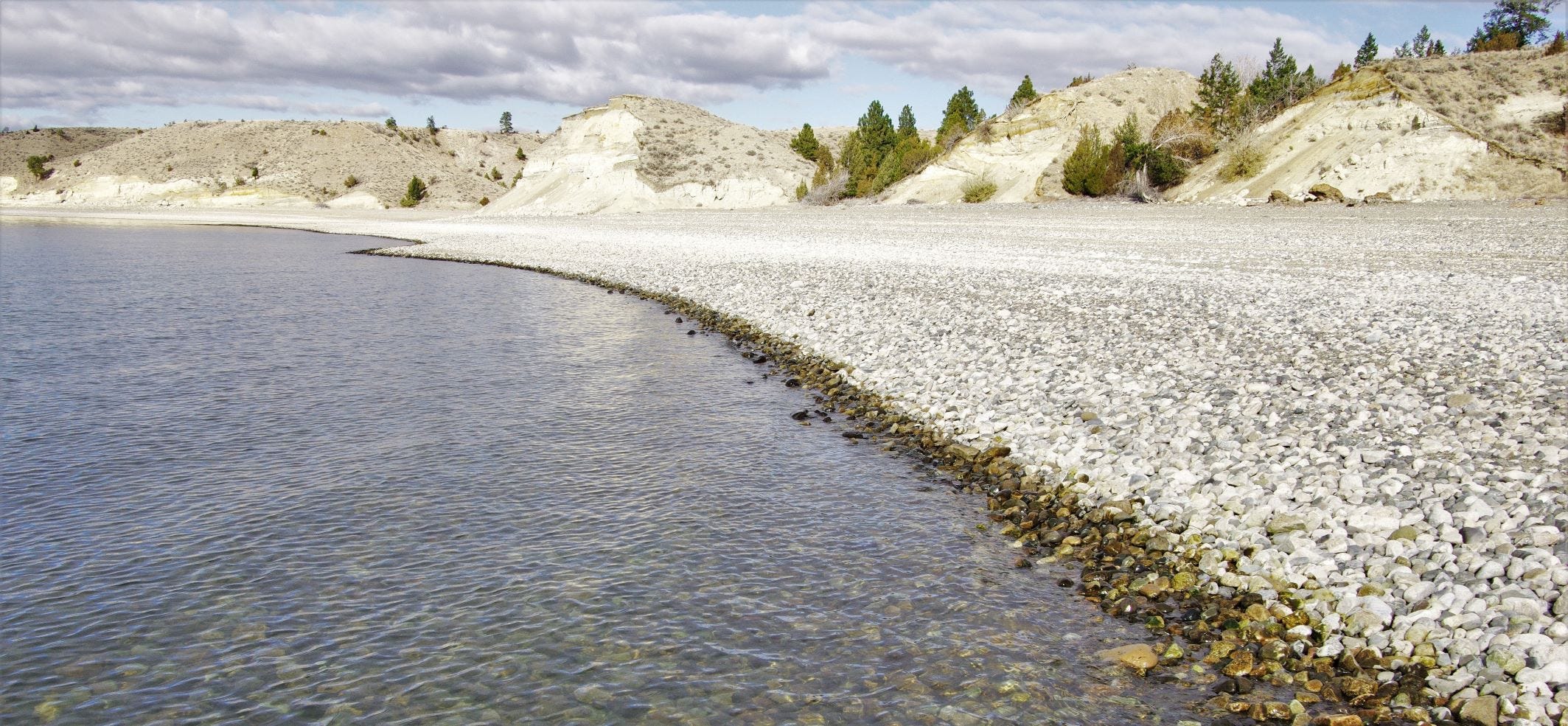

Plowing the bottom with hardbaits dangling multiple treble hooks isn’t possible everywhere. Rolling rocks requires that the bottom be mostly snag-free and devoid of bottom moss, weeds and grass. Clean bottom is a requirement to keep lures running true.
Finding perfectly clean gravel can be difficult, but here are some tips:
1—Check lakes and reservoirs with variable water levels. When the lake level drops, shoreline gets exposed, and aquatic vegetation dies. When the lake floods again seasonally, that stretch of shoreline tends to be much cleaner. Reservoir systems are famous for big changes in water level, and this benefits you!
2—Check waters that have been scoured by current. Unsurprisingly, heavy spring runoff washes vegetation, bottom moss, twigs and silt away from gravel, rocks and cobble. Tailraces and confluences with rivers running into lakes offer rocky bottom scoured clean for us to dredge with crankbaits!
3—Check windy shorelines. The harder the wind blows onto a shoreline, the more likely it is that the terrain has been washed clean. Roiled shorelines with rocky bottom tend not to grow weedbeds or other vegetation, creating opportunities for rolling rocks.
Triggering Bites & Rebound Time
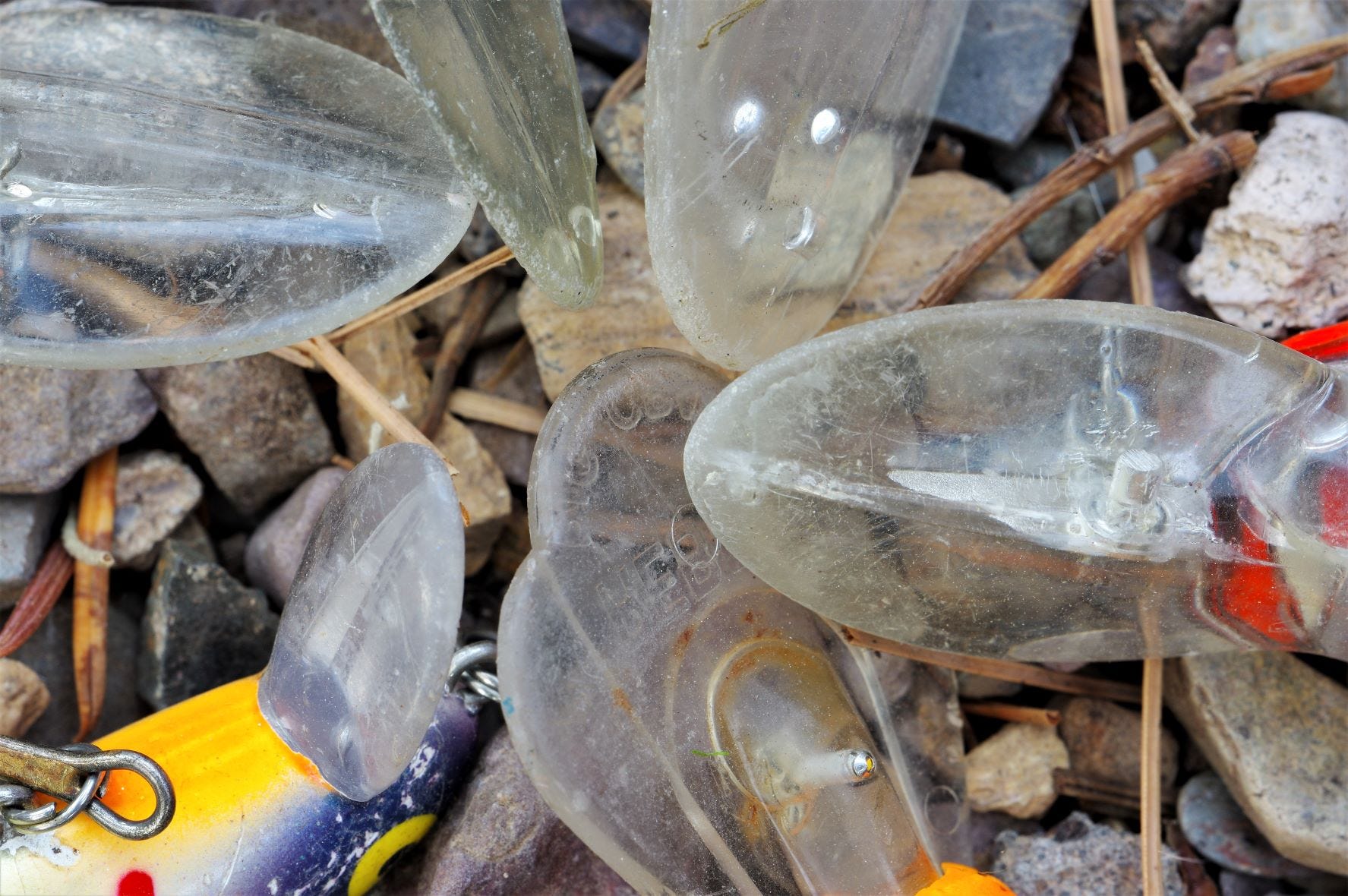

Anybody who regularly fishes crankbaits for walleyes knows that walleyes seem to bite best when your crankbait does something different—speeds up or slows down, careens off stumps, bumps bottom, changes direction—anything to alter the rhythm and sound of the lures’ rattles. This is where rolling rocks really excels. That lure pounding and digging and flipping rocks doesn’t have a rhythm! It stalls when hitting a rock and speeds back up when it rolls the rock and releases. It caroms off bottom, wildly darting this way and that. PERFECT for triggering walleyes. And not just hot, active fish. Those tight-lipped walleyes are susceptible to being triggered as well.
One factor to consider when plowing bottom for walleyes is the way your lure rebounds after hitting bottom. Depending on trolling or retrieve speed, some lures bump bottom and barely miss a beat before smacking bottom again. Other lures hit bottom and then deflect up a couple feet before digging back down. You’ll find that some lures just can’t take the heat of the rolling rocks method and will actually rebound clear up to the surface, running upside down and “digging” toward the top!
Trial and error and experimenting with trolling or retrieve speed will tell you which lures in your box like the tactic and which just can’t take it. For me, “when in doubt, get a Bomber out” has been my mantra, though my best fishing buddy constantly taunts me about Bandit walleye baits doing it even better. Truth is, the Norman Deep Little N, NXS and DD22 handle rolling rocks quite well. So does the aforementioned Cotton Cordell Wally Diver. Anglers nationwide have dredged bottom with the Rebel Craw series for decades, and the lobed diving lip of the Rebel Big Craw gives a different rebound off bottom than other lures without the lobes—it works!
Conclusion
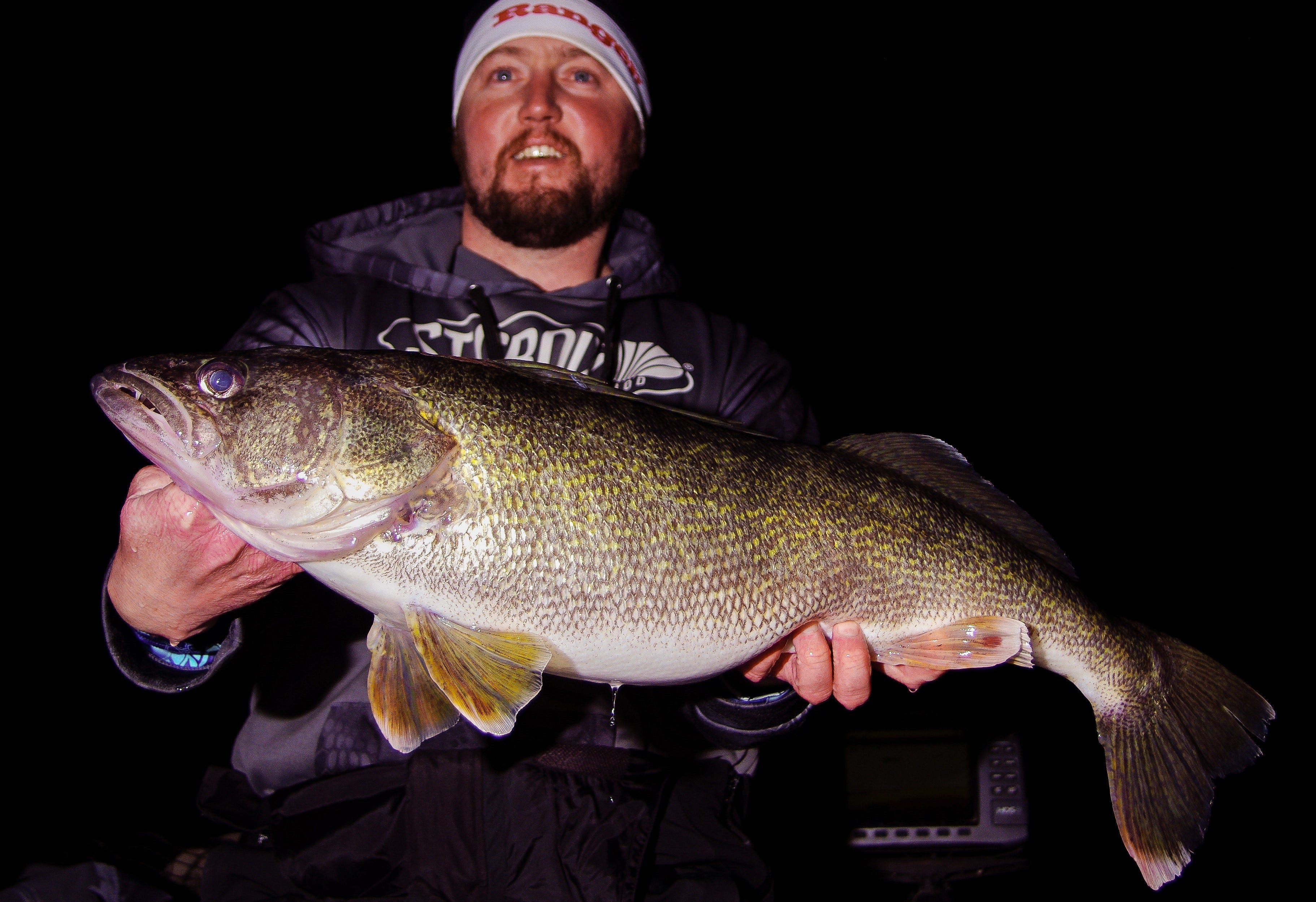

So, the next time everybody else starts complaining that the bite just isn’t on, and when other boats start toning it down to play the finesse game (or when the bite is really going great and the fish are willing), kick it up a notch! Grab your stout rods, heavy line and big-lipped cranks. It’s time to roll rocks until the walleye wear you out!
Tackle for Rolling Rocks
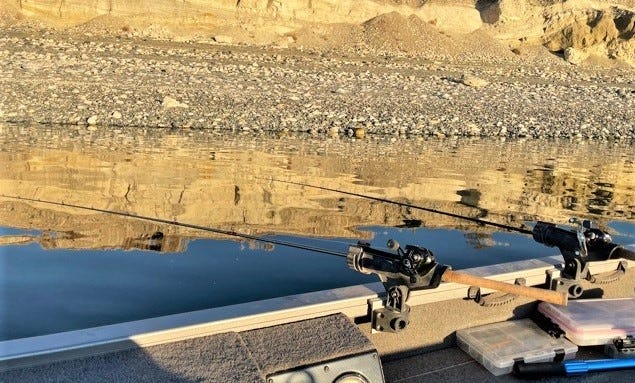

- 6’6” to 7’ Rods. Avoid rods with moderate action and medium light power. You’ll want fast action with medium or medium heavy power to handle high speeds and hard-dragging deep divers. Those moderate action rods with extra-long handles that are so popular on the Great Lakes aren’t very happy when rolling rocks like a mad fiend.
- 12- to 14-Pound Fluorocarbon Line. Braids telegraph too much of the wild action (rod bounces so hard it shakes my brain). You need a bit of a buffer that you get with moderate line stretch. I’ve done it with monofilament, back in the day, but modern fluorocarbon is the ticket. Light line is risky when rubbing across zillions of rocks for hours at a time.
- Casting Reels. Just try reeling in an extreme deep diver with a spinning reel, without slowing the boat. Almost impossible! Strong line and stiff rods are a perfect match for casting reels. I use the tiny little low-profile line counters from Daiwa and Abu Garcia. This allows me to palm the reel for easier control.
- Just Say No to Planer Boards. Don’t get me wrong, I’ve cashed a lot of tournament checks while fishing with planer boards, but only rarely when rolling rocks. Terror inflicted on boards is a bit extreme. Boards are the absolute best for open-water trolling. Use them! However, following contours and dredging at extreme speeds just doesn’t make it easy to read your boards for fish or fouled plugs. I prefer the control of flat lines for this method.
Final Tip:
Form a Zebra Mussel strategy. Rolling rocks by cranking through cobble covered with mussels is not easy on your line. Some people use a shock leader of heavy fluorocarbon to moderate the impact of mussels. Titanium leaders are even better. But one thing is for sure, you MUST have a strategy for dealing with mussels if you want to dredge waters infested with them. You may find that the mussels force you to be particular about depth and troll your baits above bottom…darn!



